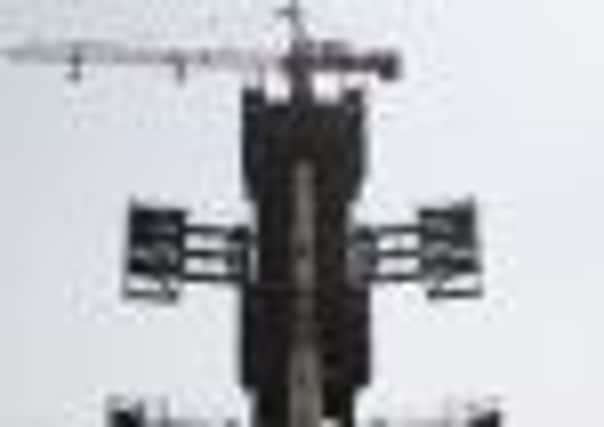North Korea lines up nuclear test as well as rocket launch


The excavation at North Korea’s north-east Punggye-ri site, where nuclear tests were conducted in 2006 and 2009, is in its final stages, according to a report by intelligence officials published yesterday.
The report’s release comes as North Korea prepares to launch a long-range rocket that Seoul, the United States, European Union and Japan have all said is a cover for testing long-range missile technology.
Advertisement
Hide AdAdvertisement
Hide AdObservers fear a repeat of 2009, when international criticism of the North’s last long-range rocket launch prompted Pyongyang to walk away from nuclear disarmament negotiations and, weeks later, conduct its second nuclear test. A year later, 50 South Koreans were killed in attacks blamed on the North.
“North Korea is covertly preparing for a third nuclear test, which would be another grave provocation,” said the report, which cited US commercial satellite photos taken this month.
“North Korea is digging up a new tunnel at the Punggye-ri nuclear test site, in addition to its existing two underground tunnels, and it has been confirmed that the excavation works are in the final stages.”
Earth and debris believed to have been brought from other areas is piled at the tunnel entrance, the report said, something experts say is needed to fill up tunnels before a nuclear test. The dirt indicates a “high possibility” North Korea will stage a nuclear test, the report said, as plugging tunnels was the final step taken during its two previous underground nuclear tests.
North Korea last month announced plans to launch an observation satellite using a three-stage rocket during mid-April celebrations of the 100th anniversary of the birth of the country’s founder, Kim Il-Sung.
The US, Japan, Britain and other nations have urged North Korea to cancel the launch, warning that firing the long-range Unha-3 rocket would violate United Nations resolutions and North Korea’s promise to refrain from engaging in nuclear and missile activity.
Reporters from western news outlets were taken to the new Sohae launch station, close to the border with China, this weekend, in an attempt by the regime to convince a global audience of its peaceful intentions.
The second stage booster is planned to separate in the seas to the west of the Philippines, about 1,860 miles from the launch site. Experts say that represents the first landfall for the rocket if things go wrong.
Advertisement
Hide AdAdvertisement
Hide AdIf North Korea does achieve a successful separation of the third stage and put a satellite into orbit – which it says it achieved in 2009, though this was disputed by most experts – that would show it had improved its technology and had the capacity to produce a missile capable of carrying an intercontinental nuclear warhead.
Pyongyang has shifted its launch site to Sohae, on the west of the Korean peninsula, reducing the risk of debris falling on Japan, which was overflown in a previous test-launch of a missile. This launch will take the rocket down the west coast of the Korean peninsula.
Japan, which fears a repeat of a 2009 firing over its territory, has put its missile batteries on alert to shoot the rocket down.
Some Asian airlines have said they plan to change some flight paths to avoid the rocket.
The Unha-3 is probably the same three-stage liquid-fuelled ballistic missile the North fired in 2009 over Japan which eventually splashed down after a 2,300-mile flight, military experts in South Korea said.
The new rocket is believed to have a range of more than 4,160 miles, and can carry a payload of up to 1,000kg.